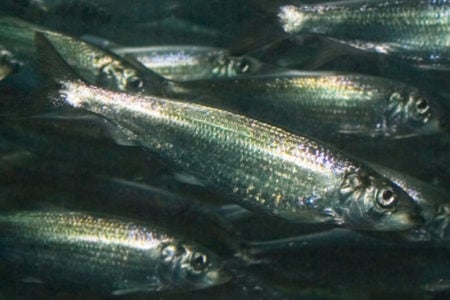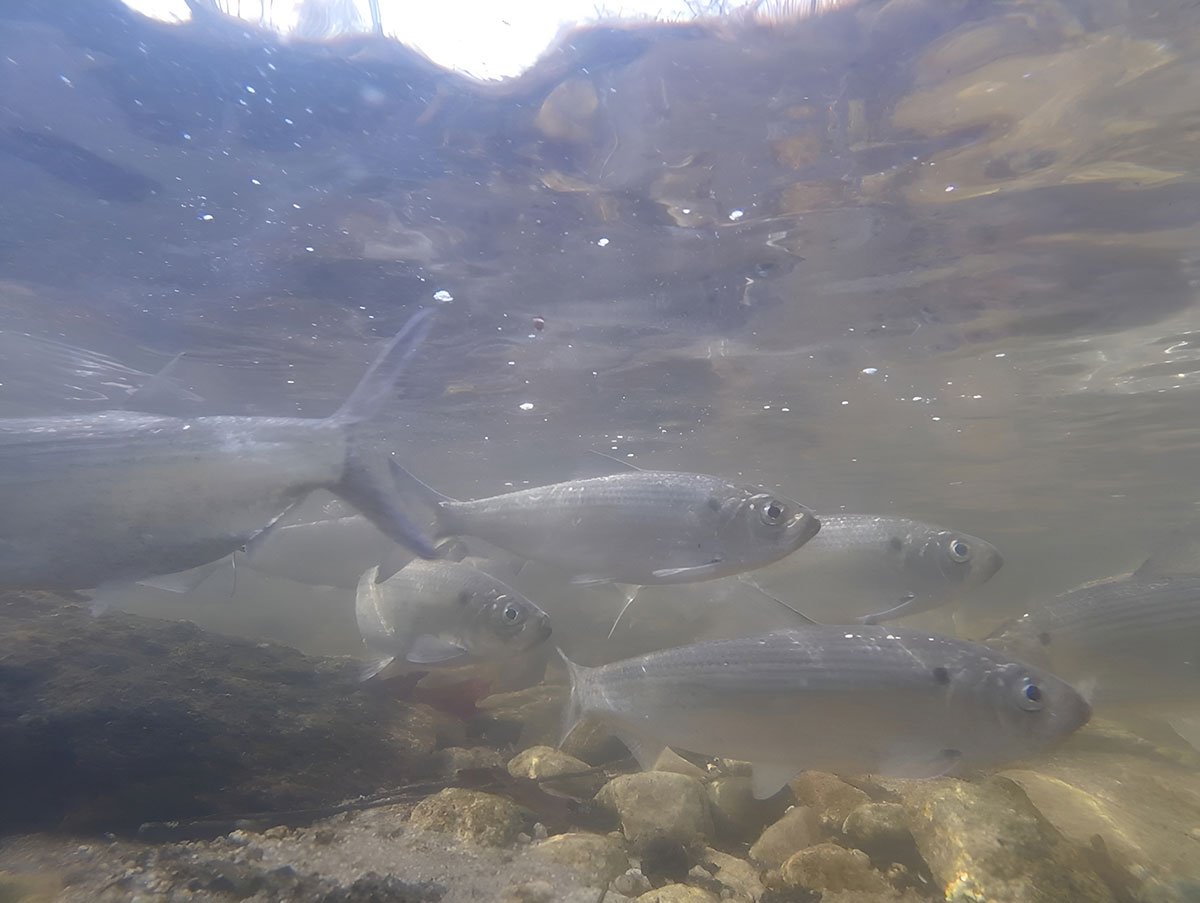
Disappearing river herring and the loss of Southern New England’s unique springtime urban surf fishing opportunities
The line hummed through the wire guides on my hand-me-down 10-footer, the crudely taped-on Penn reel shifting beneath my clenched fingers… these memories are etched into the back of my skull as clearly as the rainy April day in 2005 when they took place. My rod doubled and my stomach dropped as I felt that sickening pop as one of the trebles broke free. Conversely, I also remember the nervous laughter that followed when I realized I was still hooked up. This plug was the same worn out wooden Danny swimmer that 15-year-old me had spent the previous winter meticulously rebuilding in my grandpa’s basement so I would be prepared for the very moment when I hooked my first truly giant bass from the surf.
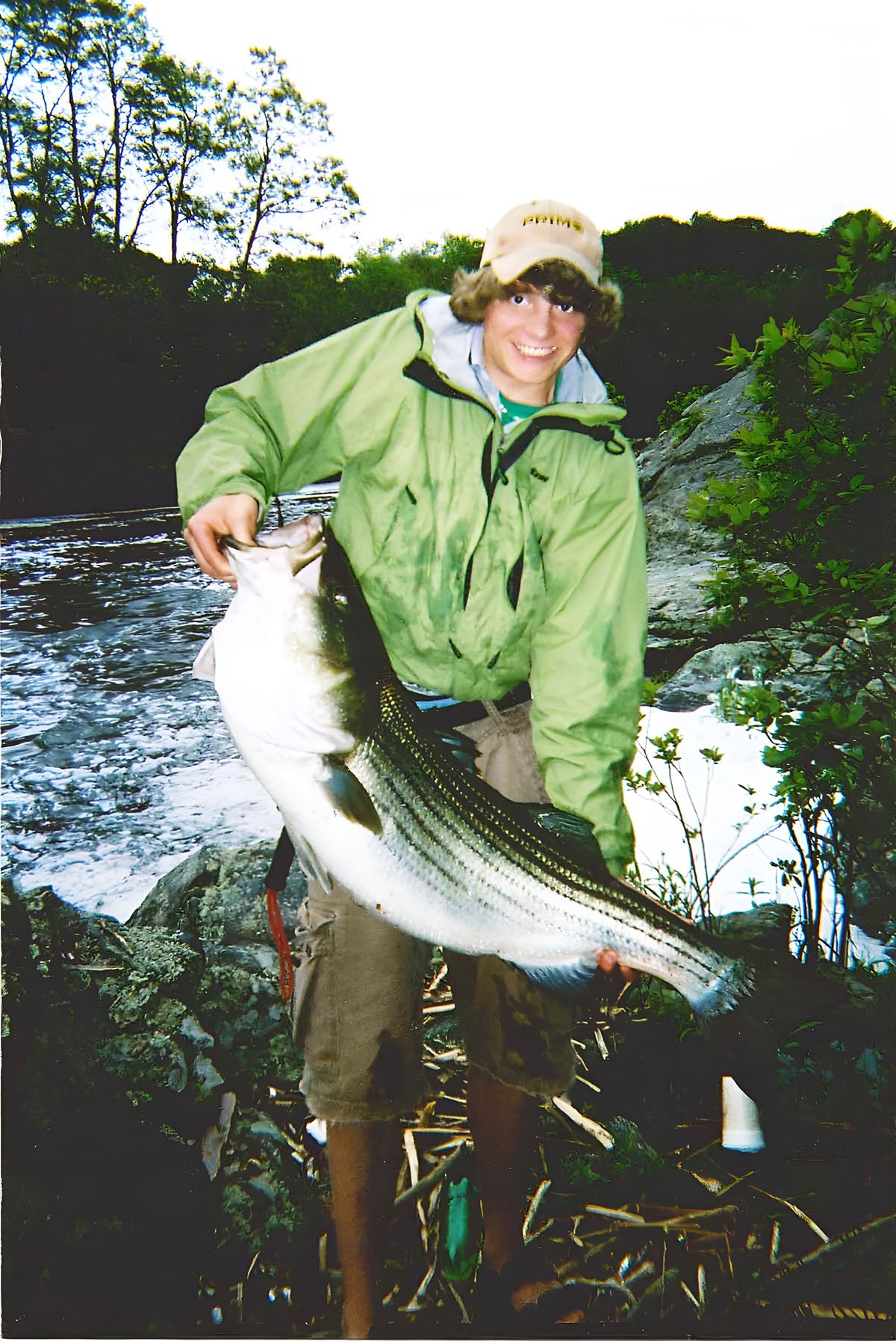
Birth of a Surfman
I emphasize ‘surf’, because it’s important to note that surf fishing for striped bass was my childhood obsession. An obsession that was somewhat ironic, given the actual surf was largely outside of my range, growing up in a crowded inland Connecticut city. Thankfully, the irony was lost on me as I carefully read the influential writings of Tim Coleman and Frank Daignault; often seeing myself in daydreams casting wooden plugs along the various shorelines of New England. But, I was still stuck in my crusty old city, grappling with the struggles that kids growing up in my position are dealt. Getting beat up walking home from school, losing friends to various struggles and spending the formative years of elementary and middle school getting made fun of for being the “fish kid” were just some of the things that drove me to the river that wound around my home city.
Sure, the banks were littered with trash, the storm drains leaked sewage and automotive waste that burned your nose when it rained, and the many ghost shopping carts stole too many of my hard-earned plugs, but those social issues would quickly fade every spring when that river would swell with the spring migration of spawning river herring and the hungry striped bass who chased them. They were here until June and until June this became my unique little surf fishing world until I was old enough to finally leave and follow them north each summer.
The truly unique thing about this fishery, however, was just how deadly the same gear and techniques used in the open surf could be. At the time, I worked to emulate those who came before me, so I would try to use the same plugs and fish the same gear the surf sharpies wrote about. I couldn’t afford a Van Staal, so I cut the bail from my old Penn, packed it with blue grease, and fished bail-less. I wanted to use big wooden trolling swimmers, Danny plugs, and pencil poppers, but they were too expensive, so I fixed up plugs I found snagged or washed up and started building my own crude examples in my late grandfather’s woodshop.
These plugs were too big for my cheap 9-footer, so I bought an old third-hand Lamiglas 1201m and taped my reel on with electrical tape. Korkers, waders, a belt, and an early dry top sounded really cool, so I begged for those for Christmas and my birthday, arguing that I would be much safer with that gear when I fished alone. Lights? You don’t use lights, because lights scare the fish and falling down the bank and stepping into water that was deeper and faster than you realized built character. I dove in headfirst, soaked this information up like a sponge, and loved every bit of this style of fishing. Thankfully, the fish loved this style of fishing as well.
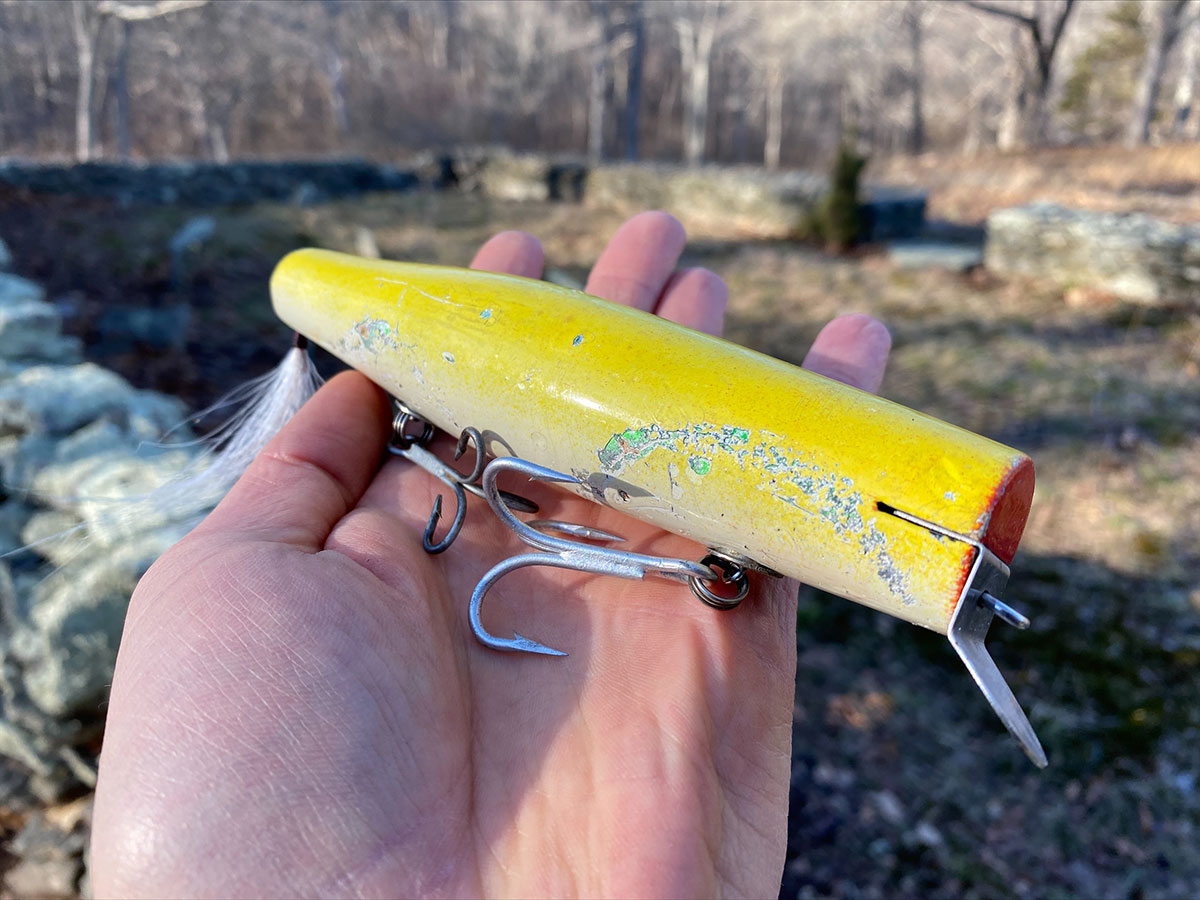
A Dwindling Fishery
When I first started fishing the herring runs with my father in the mid-1990s, we saw an angler land a 36-inch bass at the base of a dam. That fish seemed larger than me at the time and I honestly never expected to see one on the end of my own line. By the early 2000s, however, it became very clear to me that the bass of surf fisherman’s dreams swam up these rivers chasing herring and bass much larger than that 36-incher could be hooked with regularity. I say “hooked” because a jar of bent and broken hooks, countless blown-up drags, two broken rods, and more tears of despair than I care to admit were quickly accumulated in my early surf fishing career along this river.
By that faithful day in 2005 when I found myself locked in a battle with a fish of truly massive proportions, I had filled my fishing logs with hundreds of bass to 47 inches and was feeling much more confident than a kid in my situation should have. That was the magic of this herring run fishery though. I could be out there before the adults who had to work until 5, fish alone in all the best spots and then sneak out in the evening before anyone saw how I was fishing. This fishery literally laid the foundation for the surf fisherman I had hoped to become and quickly instilled a love and passion for river herring and striped bass that I still hold today as a river herring biologist for the state of Connecticut.
As I leaned hard against that struggling bass on that rainy April day, it had not yet dawned on me that the 2005 season had been much slower than the season before that; a trend that had unfolded for the previous few years. As I started gaining line again, I didn’t think about the fact that these were the first schools of herring I had seen so far that year and it was weeks into the herring season. As I looked up over my shoulder and saw my dad scrambling down to help, I never could have imagined that this fishery we loved so much could be dying.
Then it happened, I felt that sickening grinding feeling of the braid meeting its fate against a piece of earth’s history. I saw the massive broom tail on what I truly believed to be my first 50 come out of the water and then froze with horror as the line parted, spinning me sideways with the sudden loss of tension. My heart sank, I fought tears, and I’m embarrassed to say I turned and threw my rod like a javelin against the bank. This was my first truly heartbreaking experience as a budding surfcaster. I replayed those minutes over and over like a bad breakup for that season, never realizing that this would be my last truly good season on that river and there would never be a chance for redemption, as each following season yielded fewer herring and fewer bass.
Yes, we had a few bass here and there over the earlier portions of the last twenty years, but as my gear improved and my skills were better honed it became harder and harder to find a bass chasing herring. It has now been roughly 10 years since I landed a bass from that herring run and it is not for a lack of trying. I still walk those trails every spring looking for herring that never show and I still try casting plugs at bass that don’t exist, but the reality is this once unique fishery that once attracted thousands of urban anglers across Connecticut between the 1980s and the early 2000s is largely gone. It genuinely breaks my heart that we have lost this fishery that defined who I was as an angler, but more importantly who I have become, I was my obsession with this fishery that lead me into fisheries conservation and restoration work for river herring in the state I call home.
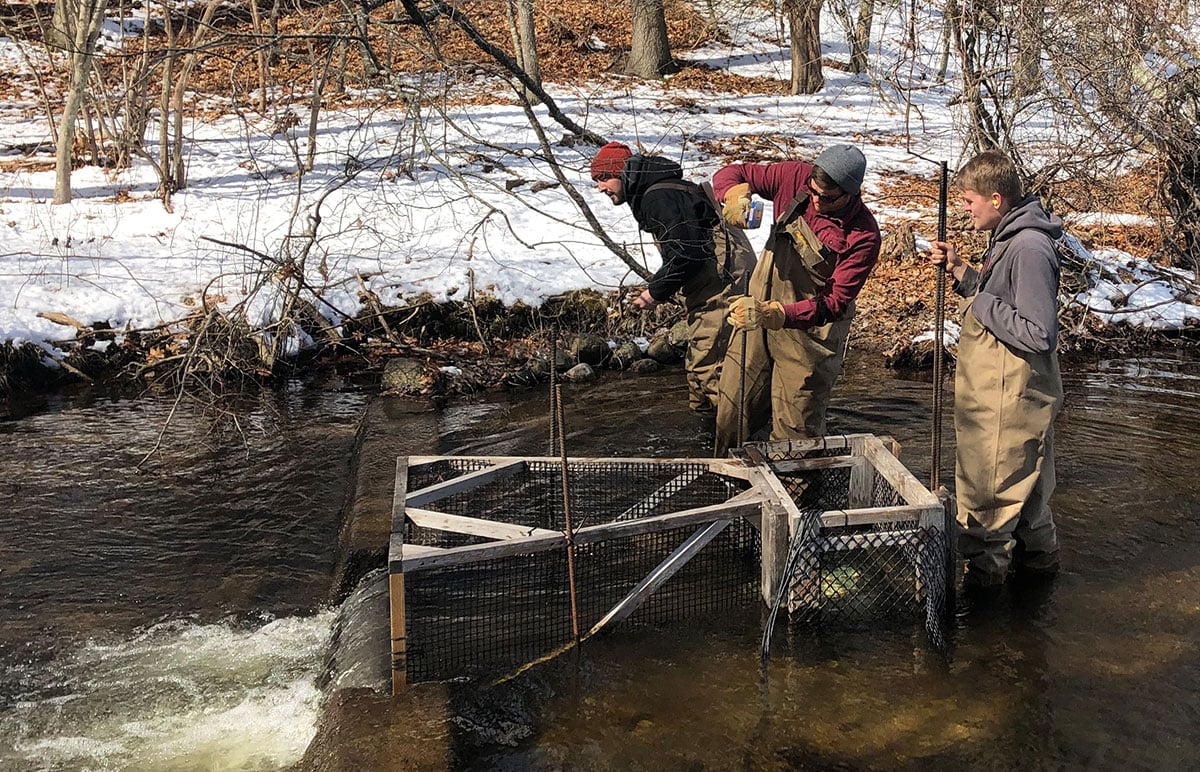
Bycatch By The Numbers
Today, I spend most of the spring nights I would normally have been bass fishing looking for the few remaining river herring across Connecticut, Long Island, and western Rhode Island in the hopes of identifying the remaining runs before they are lost. In 2023, zero blueback herring returned to the fishway on my home river, a river that once supported hundreds of thousands each spring before the population started to tank in the mid-1990s. As biologists, we have been struggling to protect and restore these once prolific runs ever since those first signs of trouble quickly grew into population collapse by the mid-2000s. States quickly reacted by removing dams, building fishways, and cleaning up these once polluted rivers, but the fish continued to disappear. In response, a full moratorium on the recreational take of river herring across southern New England was enacted in 2002, with the goal of curtailing their decline. This effort worked in northern New England states and those south of New Jersey, but here in southern New England, something was still causing our numbers to drop.
| TAKE ACTION |
| If you yourself remember the good old days of urban surfcasting for spring stripers, or you are new to the sport and want to experience this truly unique fishery someday, please consider writing to the New England Fisheries Management Council and telling them that you support enhancing river herring and shad avoidance and catch reduction in the Atlantic herring fishery. The council is currently in the public scoping process and is looking for your feedback on this issue with public scoping meetings and solicitations for written testimony. All written testimonies are due by 8 a.m. on Tuesday April 30th and can be emailed to [email protected] or addressed to:
Cate O’Keefe, PhD Please reference: “Atlantic Herring Amendment 10 Scoping Comments” |
Sadly the largest documented take of herring was not addressed by recreational moratoriums. Instead, this take of 490 metric tons of river herring is still allowed as incidental bycatch in the commercial Atlantic herring and Atlantic mackerel fisheries each year. This catch cap allowance, set by the New England Fisheries Management Council to help deter boats from landing river herring, still allows for the legal take of roughly 5 million river herring (10,000 to a metric ton) each year in these fisheries before the fishery is shutdown. In the waters around Georges Bank and east of Nantucket, there is no cap because no incidental catch cap value was set. Couple this with little to, in some cases, no fisheries observer coverage in recent years to document and enumerate this take, and it is easy to find concern over the allowable landings. Even more alarming, a peer reviewed paper authored by many New England fisheries biologists and university researchers (Reid et al. 2022) estimated that bycatch took about 4.6 million alewife and 1.2 million blueback herring between 2012 and 2015. Numbers that dwarf the 176,000 total river herring passed across the entire state of CT in 2023. This total passage number includes the Connecticut River run, which alone passed 632,000 river herring in 1985. In 2023, the Connecticut River saw only 2,211 river herring: a 99.7% decrease. Additionally, these authors found that highest bycatch numbers came genetically from Block Island Sound, Nantucket, and Long Island Sound herring runs. The very runs currently struggling the hardest to recover.
But all hope is not lost. In the waters off the Gulf of Maine, a time area closure has been in place that prevents Atlantic Herring fishing until June, and even then, only purse seine boats are allowed to fish until October 1 when larger midwater trawlers are again allowed into this region. This closure prevents the incidental harvest of river herring that are staging in these coastal waters each spring as they prepare for upstream spawning migrations. Since this closure has been put in place, we have watched river herring runs continuously improve in Maine with some runs surpassing 5 million fish in 2023. With time area closures like those in the Gulf of Maine on the table for consideration as the New England Fisheries Management Council revisits the Atlantic herring fisheries management plan with amendment ten this year, we may yet see some relief for our once prolific herring runs. I know myself and thousands of other urban surfcasters across southern New England are hoping for the very same thing.
